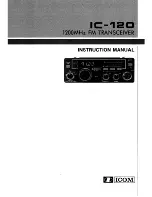
UAV-1000711-001
ECCN 7A994
Page
15 | 24
8.5 Cooling Requirements
Ping1090 is designed to meet all applicable TSO requirements without
forced-air cooling.
Attention should, however, be given to the incorporation of cooling
provisions to limit the maximum operating temperature if Ping1090 is
installed in close proximity to other Avionics. The reliability of equipment
operating in close proximity in an avionics bay can be degraded if adequate
cooling is not provided.
8.6 Wiring Considerations
The Ping1090 was designed and tested using unshielded, untwisted wiring.
There may, however, be technical benefits of improved electromagnetic
emissions and susceptibility to and from the transponder system. Use of
twisted wire can reduce interference and break-through on adjacent audio
wiring if it is not possible to route them separately.
The distance between the Ping1090 and the power adapter is limited by the
impedance of the wire between them. The Ping1090 is powered directly
from aircraft power, and, therefore, the acceptable voltage drop in the
power line is what limits the distance.
The Ping1090 needs an impedance of less than 0.5ohm in the power line
for satisfactory operation. The following table gives guidance for typical
aircraft hook-up wire. Note that different brands may vary
– check your
supplier for details.
Gauge
ohm/km
Length for 0.5ohm
20 AWG
35
14.2m
22 AWG
64
7.8m
24 AWG
99
5.0m
An alternative to a harness built from individual wires, particularly for a long
cable run, is to use a multi-core cable. Aviation grade cables with 6 or more
cores are often more expensive than individual wires, and, therefore, are
not generally a good choice. For aircraft where those situations do not
















































